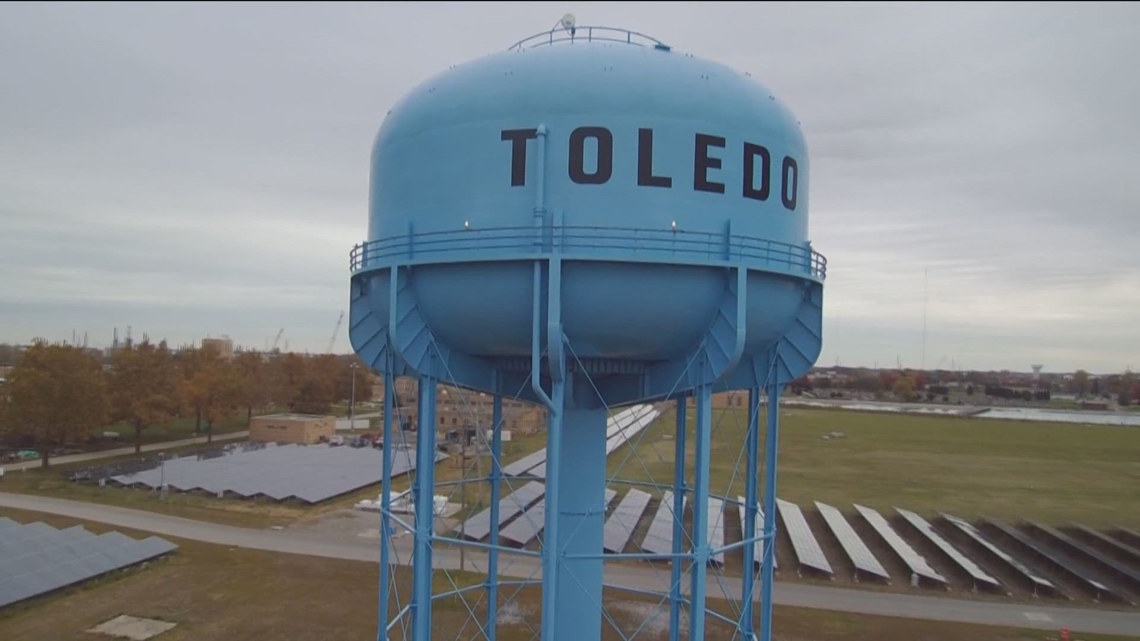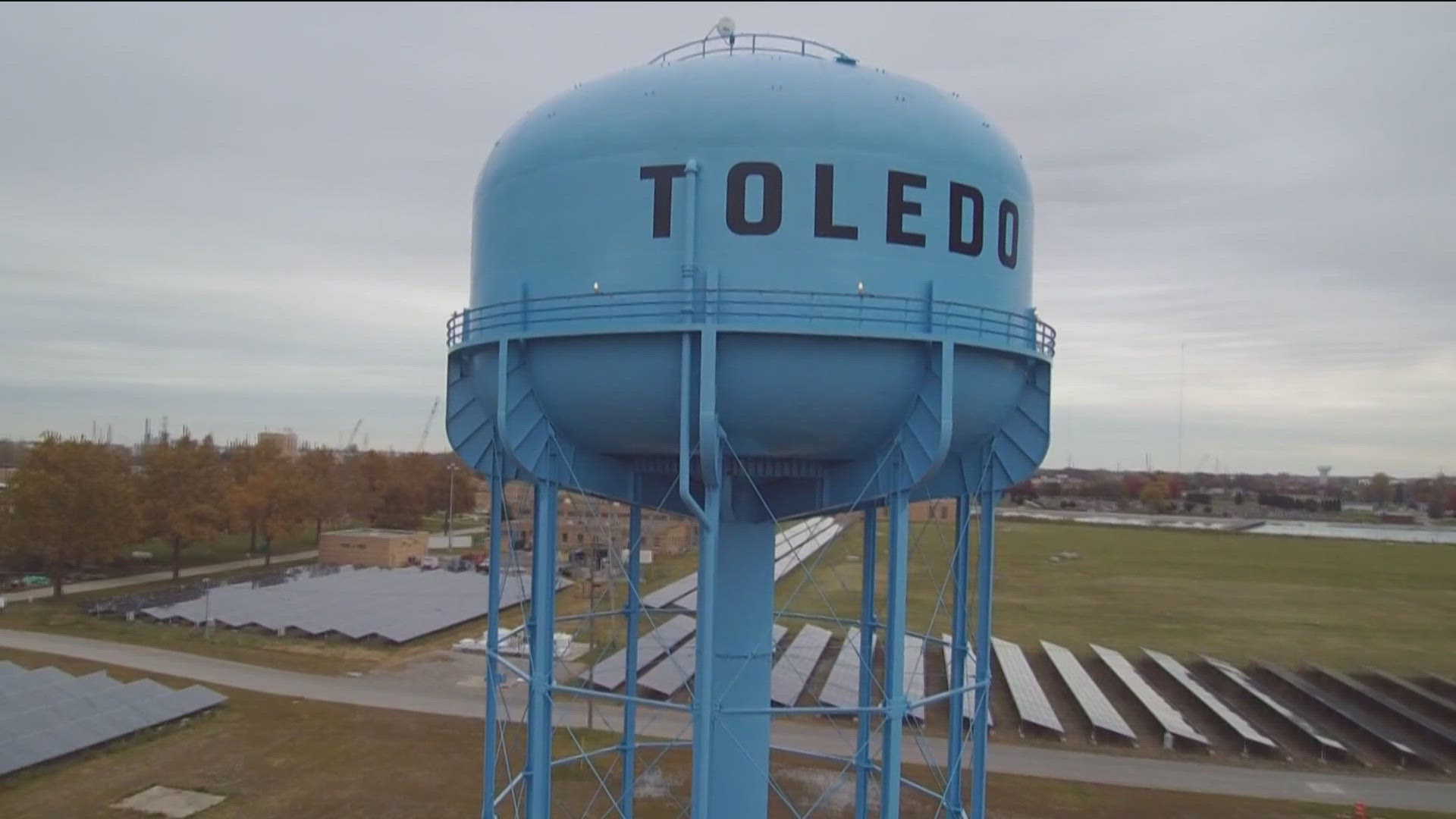TOLEDO, Ohio — Toledo water users woke up the morning of Aug. 2, 2014, to a warning from their TVs, radios and even their neighbors.
That warning?
Don’t drink or touch the water.
Families rushed out to get bottled water because this wasn't a typical boil advisory. We were told you couldn't boil away the toxicity.
WTOL 11 is staying committed to looking back at this historic event. We’re focusing on not only where we are now, but what some also say was the good that came out of the water crisis ten years ago.
Psychologists have said the 2014 water crisis was enough to give people anxiety or even some form of post traumatic stress disorder (PTSD). But for all the negative things it presented, officials say there was some good that came out of it.
For example, there is the water quality dashboard. It’s an online water-quality tracking system.
Officials enacted plans for a redundant water source, a reservoir, on land in Oregon that Toledo has already purchased. When complete, it will provide about a 10-day freshwater source should the lake ever become contaminated again.
But maybe more than anything, those three days led to the formation of a regional water commission in 2019 - a collective unit of Toledo water users at one table.
Toledo, Sylvania, Perrysburg, Northwestern Water and Sewer District, Whitehouse, Maumee, Fulton County and Monroe County all have a seat at that table.
"The big difference now is instead of politicians being in charge of the water systems and the capital improvements, we have a board of engineers overseeing it," said Sylvania Mayor Craig Stough.
In Perrysburg, Mayor Tom Mackin agrees with Stough that politics are no longer an impediment to the region’s progress, but that there is still work to be done.
"We need to change the culture of the region to say this has to be a priority,” said Mackin. “We have to spend the money on an ongoing basis to accomplish that."
One of the smaller municipal members of the commission, but still impacted by its decisions and rates, the Village of Whitehouse is confident in the changes that have been made since the crisis of 2014.
"I think our water customers can have supreme assurance that nothing like that will ever happen again,” said Jordan Daughtery, Municipal Administrator of the Village of Whitehouse. “They can turn on the tap and know that they have quality water."
Meanwhile in Maumee, another of the Regional Water Commission members, Mayor Jim MacDonald believes there’s been significant progress in the decade since the "Do Not Drink" order was issued by then Toledo Mayor D. Michael Collins.
"I think we've made progress, especially since 2014," said MacDonald. “The fact that we haven't had a recurrence is positive, that at least we're moving in the right direction.”
So, what brought about such a change in how cities, towns and communities get their water?
Commission members said water was once used as a weapon in negotiations, never as a shared asset for the betterment of all. While there are still disagreements, and nothing is perfect, they say engineers and those on the technical side of things have more of a voice in day-to-day operations.
"Certainly anything could happen again. The difference now is the treatment plants are set up to handle it, our operators are well trained. I don't think it would ever be an issue like what we faced before," said Tom Stalter, manager of Engineering at Northwestern Water and Sewer District.


Still, the situation with our water is fluid. Officials say we’ll likely never get back to what we saw in 2014, but that doesn’t mean all of our issues have solutions, at least not yet.
"We do still have a lake water problem, but we no longer have a drinking water problem,” said Toledo Mayor Wade Kapszukiewicz.
“That is because the citizens of Toledo and unfortunately with very little help from the state or the federal government reached into their pockets and made the investments at the Collins Park Water plant now that allows us to take water from what is still a polluted source and now it allows us to feel comfortable that what comes out of the faucet is not just drinkable - but since the water crisis we've won awards for the quality of our drinking water."
So, are we in the clear? Not exactly.
Officials say there are a couple of things at play here. The board of Lucas County Commissioners, the City of Toledo, and the Environmental Law & Policy Center recently filed a federal lawsuit against the EPA.
They allege the EPA knowingly violated the Clean Water Act by not enforcing runoff amounts into the western basin of Lake Erie.
"We did a good job in our space,” said Pete Gerken, president of the Lucas County Board of Commissioners. “It's a little disheartening our work is kind of being negated by the new phosphorus that comes in from feeding operations."
But that's not all.
There's also the threat of an old water delivery line from the lake to the treatment plant. It was installed during WWII, and engineers say that it could fail at any time.
WTOL 11 reported about this to you last spring. The work to design this project is underway and we're told construction will begin in 2025.

